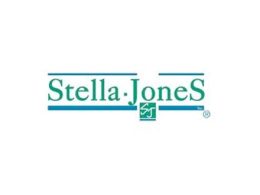Emerging Markets Radar (January 13, 2014)
Strengths
- Turkey’s industrial production number for the month of November registered a 4.6 percent increase over the same period last year, beating expectations for a 4.1 percent increase. The top sectors contributing to the uptick were driven largely by the export-oriented sectors, as well as domestic demand for computers, electrical machinery, and furniture.
- The HSBC Emerging Markets Index, a monthly indicator derived from purchasing managers’ index (PMI) surveys, recorded broad-based goods output growth across the economies covered, with the strongest expansions seen in Taiwan, the Czech Republic, and Turkey. Curiously, these three markets are large exporters to the European Union (EU).
- China’s consumer price index (CPI) dropped more than expected in December, falling to 2.5 percent over the same period last year, and lower than the 3 percent recorded in November, and the forecast of 2.7 percent. According to HSBC economist Xiaoping Ma, "inflation pressures remain modest, which will allow policy makers to continue focusing on policies to support growth while implementing structural reform measures in 2014."
Weaknesses
- Despite the uptick in goods output growth of most emerging markets, the HSBC Emerging Markets Index showed that overall output across the emerging markets universe grew at a weaker pace relative to the prior reading in November. Manufacturing activity continues to support the slower growth in service activity, which grew at the lowest rate in three months.
- Headline consumer price inflation in the Philippines reached a two-year high in December, at 4.1 percent year-on-year. The pick-up in inflation came despite a price freeze imposed by the government in November in areas hit by Typhoon Haiyan. Data from the National Statistics Office showed that prices rose in year-on-year terms in almost all goods categories in December, with food prices rising by 5 percent for the month.
- Brazil’s consumer price inflation for 2013 exceeded every estimate from analysts as it accelerated to 5.91 percent from the previous year. The reading boosts pressure on the central bank to extend the world’s biggest tightening cycle, which raised its benchmark interest rate from 7.25 percent to 10 percent over the course of 2013.
Opportunities
- China became the world’s biggest trader in goods for the first time in 2013, overtaking the U.S. growth in intra-Asia trade and increasing flows with the Middle East; both were big drivers behind the export figures. The total value of China’s imports and exports in 2013 was $4.16 trillion, a 7.6 percent increase according to figures released by the Chinese government on Friday. The U.S. will release its full-year figures in February, but it is a virtual certainty that it will not top China as the world’s biggest goods-trading nation.
- Laurence Balanco, technical analyst at CLSA, argues that Asia and emerging markets have a chance to commence outperformance in the second half of this year. Similarly, CLSA’s head of micro strategy, Desh Peramunetilleke, highlights that developed markets are now trading at nearly two standard deviations relative to emerging markets on a ten-year average trailing price-to-book basis. This roadmap is certainly plausible, with hopes for a cyclical acceleration when conviction that China is getting more of a grip on its structural problem even at the cost of some growth. Another potential leg up would be if the Indian election proves positive from a stock market perspective.
- Following the successful issuance of Irish government debt at multi-year, record-low yields, peripheral European economies saw their spreads narrow considerably relative to the German Bund. Greek bond yield spreads to German bonds of similar characteristics narrowed by a whopping 40 basis points on Monday alone, reaching the lowest level since June 2010. A number of European economies took advantage of the risk premium decrease to issue debt.
Threats
- While emerging markets are still expanding faster than developed economies, the margin will shrink to the smallest since 2002, according to Credit Suisse Group AG. The growth rate in advanced economies will almost double to 2.1 percent this year, while emerging markets will expand 5.3 percent. Morgan Stanley recommended investors reduce holdings of emerging market currencies and bonds, while Goldman Sachs advised clients to cut their emerging market allocation to 6 percent from 9 percent, citing the lack of economic reforms to improve growth.
- Mild temperatures across Europe this winter have lowered demand for natural gas, with net storage withdrawals running 24 percent below five-year averages. Gazprom, the largest natural gas extractor in the world, is the main supplier to the European market upon which it relies to subsidize the sale of cheap gas to Russian political allies and neighboring countries.
- China’s cabinet imposed new controls on the multi-trillion dollar shadow banking industry. The rules ban transactions set up to avoid existing regulation, as China seeks to shore up enforcement. The shadow banking system is seen as a threat to financial stability in China, and the recent controls are proof of concerns at the highest government levels. The government tightened rules already last year, when it limited bond sales by local governments and companies in industries with overcapacity, while allowing money market rates to spike as a deterrent to borrowing.
















